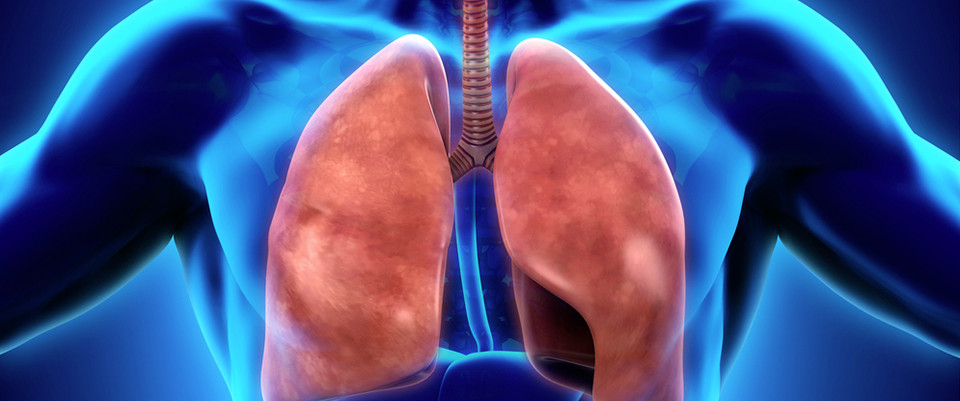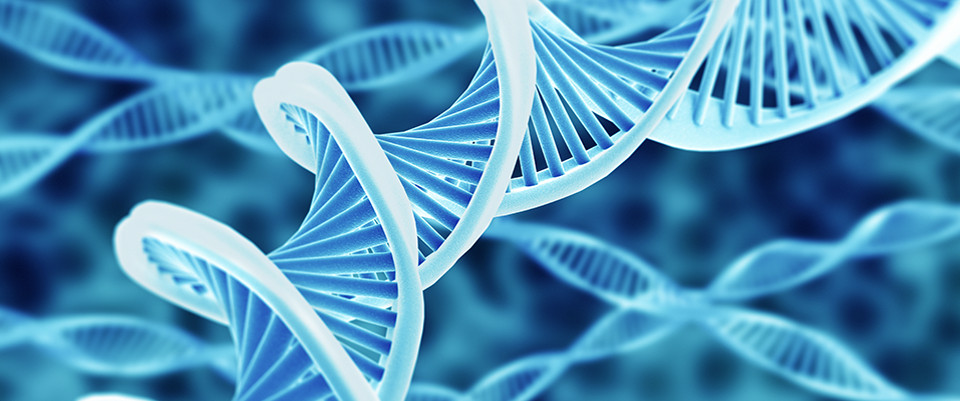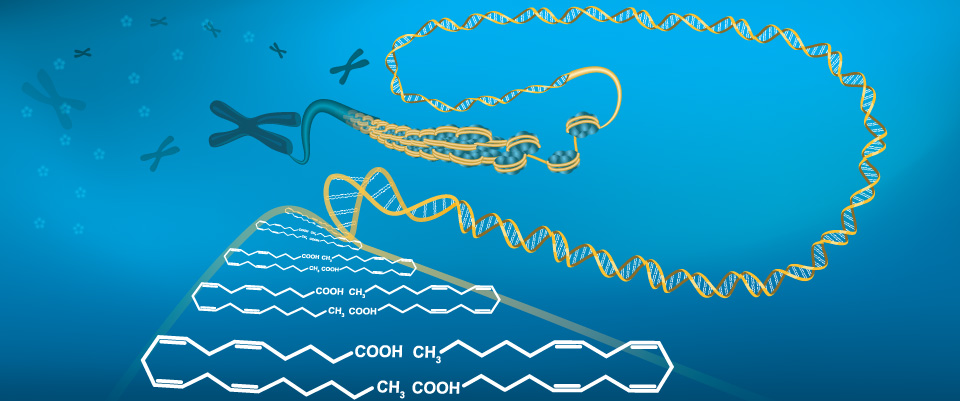PubMed
NMR spectroscopy-based metabolomics of Drosophila model of Huntington's disease suggests altered cell energetics.
Related Articles
NMR spectroscopy-based metabolomics of Drosophila model of Huntington's disease suggests altered cell energetics.
J Proteome Res. 2017 Sep 05;:
Authors: Singh V, Sharma RK, Athilingam T, Sinha P, Sinha N, Thakur AK
Abstract
Huntington's disease (HD) is a neurodegenerative disorder induced by aggregation of the pathological form of Huntingtin protein that has expanded polyglutamine (polyQ) repeats. In the Drosophila model, for instance, expression of transgenes with polyQ repeats induce HD-like pathologies progressively correlating with the increasing lengths of these repeats. Previous studies on both animal models and clinical samples have revealed metabolite imbalances during HD progression. To further explore the physiological processes linked to metabolite imbalances during HD, we have investigated 1D (1)H NMR spectroscopy-based metabolomics profile of Drosophila HD model. Using multivariate analysis (PCA and PLS-DA) of metabolites obtained from methanolic extracts of fly heads displaying retinal deformations due to polyQ overexpression, we show that the metabolite imbalance during HD are likely to affect cell energetics. Six out of the 35 metabolites analyzed, namely, nicotinamide adenine dinucleotide (NAD), lactate, pyruvate, succinate, sarcosine, and acetoin displayed segregation with progressive severity of HD. Specifically, HD progression was seen associated with reduction in NAD and increase in lactate-to-pyruvate ratio. Further, comparative analysis of fly HD metabolome with those of mouse HD model, and HD human patients, revealed comparable metabolite imbalances suggesting altered cellular energy homeostasis. These findings thus raise the possibility of therapeutic interventions for HD via modulation of cellular energetics.
PMID: 28871787 [PubMed - as supplied by publisher]
Somatic Embryogenesis in Coffee: The Evolution of Biotechnology and the Integration of Omics Technologies Offer Great Opportunities.
Related Articles
Somatic Embryogenesis in Coffee: The Evolution of Biotechnology and the Integration of Omics Technologies Offer Great Opportunities.
Front Plant Sci. 2017;8:1460
Authors: Campos NA, Panis B, Carpentier SC
Abstract
One of the most important crops cultivated around the world is coffee. There are two main cultivated species, Coffea arabica and C. canephora. Both species are difficult to improve through conventional breeding, taking at least 20 years to produce a new cultivar. Biotechnological tools such as genetic transformation, micropropagation and somatic embryogenesis (SE) have been extensively studied in order to provide practical results for coffee improvement. While genetic transformation got many attention in the past and is booming with the CRISPR technology, micropropagation and SE are still the major bottle neck and urgently need more attention. The methodologies to induce SE and the further development of the embryos are genotype-dependent, what leads to an almost empirical development of specific protocols for each cultivar or clone. This is a serious limitation and excludes a general comprehensive understanding of the process as a whole. The aim of this review is to provide an overview of which achievements and molecular insights have been gained in (coffee) somatic embryogenesis and encourage researchers to invest further in the in vitro technology and combine it with the latest omics techniques (genomics, transcriptomics, proteomics, metabolomics, and phenomics). We conclude that the evolution of biotechnology and the integration of omics technologies offer great opportunities to (i) optimize the production process of SE and the subsequent conversion into rooted plantlets and (ii) to screen for possible somaclonal variation. However, currently the usage of the latest biotechnology did not pass the stage beyond proof of potential and needs to further improve.
PMID: 28871271 [PubMed]
An LC-MS Approach to Quantitative Measurement of Ammonia Isotopologues.
Related Articles
An LC-MS Approach to Quantitative Measurement of Ammonia Isotopologues.
Sci Rep. 2017 Sep 04;7(1):10304
Authors: Spinelli JB, Kelley LP, Haigis MC
Abstract
Ammonia is a fundamental aspect of metabolism spanning all of phylogeny. Metabolomics, including metabolic tracing studies, are an integral part of elucidating the role of ammonia in these systems. However, current methods for measurement of ammonia are spectrophotometric, and cannot distinguish isotopologues of ammonia, significantly limiting metabolic tracing studies. Here, we describe a novel LC-MS-based method that quantitatively assesses both (14)N-and (15)N-isotopologues of ammonia in polar metabolite extracts. This assay (1) quantitatively measures the concentration of ammonia in polar metabolite isolates used for metabolomic studies, and (2) accurately determines the percent isotope abundance of (15)N-ammonia in a cell lysate for (15)N-isotope tracing studies. We apply this assay to quantitatively measure glutamine-derived ammonia in lung cancer cell lines with differential expression of glutaminase.
PMID: 28871132 [PubMed - in process]
Angiotensin II affects inflammation mechanisms via AMPK-related signalling pathways in HL-1 atrial myocytes.
Related Articles
Angiotensin II affects inflammation mechanisms via AMPK-related signalling pathways in HL-1 atrial myocytes.
Sci Rep. 2017 Sep 04;7(1):10328
Authors: Kim N, Jung Y, Nam M, Sun Kang M, Lee MK, Cho Y, Choi EK, Hwang GS, Soo Kim H
Abstract
Inflammation is a common cause of cardiac arrhythmia. Angiotensin ІІ (Ang ІІ) is a major contributing factor in the pathogenesis of cardiac inflammation; however, its underlying molecular mechanism remains unclear. Here, we explored the effect of Ang ІІ on inflammatory mechanisms and oxidative stress using HL-1 atrial myocytes. We showed that Ang ІІ activated c-Jun N-terminal kinase (JNK) phosphorylation and other inflammatory markers, such as transforming growth factor-β1 (TGF-β1) and tumor necrosis factor-α (TNF-α). Ang ІІ decreased oxygen consumption rate, which resulted in reactive oxygen species (ROS) generation and inhibition of ROS blocked Ang II-mediated JNK phosphorylation and TGF-β1 induction. Ang ІІ induced the expression of its specific receptor, AT1R. Ang II-induced intracellular calcium production associated with Ang ІІ-mediated signalling pathways. In addition, the generated ROS and calcium stimulated AMPK phosphorylation. Inhibiting AMPK blocked Ang II-mediated JNK and TGF-β signalling pathways. Ang ІІ concentration, along with TGF-β1 and tumor necrosis factor-α levels, was slightly increased in plasma of patients with atrial fibrillation. Taken together, these results suggest that Ang ІІ induces inflammation mechanisms through an AMPK-related signalling pathway. Our results provide new molecular targets for the development of therapeutics for inflammation-related conditions, such as atrial fibrillation.
PMID: 28871102 [PubMed - in process]
GC-MS based metabolomics of colon cancer cells using different extraction solvents.
Related Articles
GC-MS based metabolomics of colon cancer cells using different extraction solvents.
Anal Chim Acta. 2017 Sep 15;986:48-56
Authors: Ibáñez C, Simó C, Palazoglu M, Cifuentes A
Abstract
The increasing incidence of colorectal cancer enforces the development of novel methodologies and protocols to deepen in the molecular mechanisms that govern disease pathophysiological events. The aim of this work is to deepen in the optimum metabolite extraction protocol from adherent mammalian cells of colon cancer for high throughput metabolomics using gas chromatography coupled to mass spectrometry (GC-MS). GC-MS results showed that metabolic information obtained from colon cancer cells was highly dependent on metabolite extraction selection, which at the same time is extremely influenced by the analytical platform. A further purpose of this investigation is to uncover an unexplored portion of HT-29 colon cancer cells metabolome, complementary to other already explored by CE-MS and LC-MS methods. At this respect, a total of 150 metabolites were identified in HT-29 colon cancer cells by GC-MS. The extraction protocol with acetonitrile-isopropanol-water was the most appropriate for fatty acids and related pathways analysis. Most of the metabolites involved in pathways of amino acids, glutathione, amino sugars and other polar metabolites were better extracted with acidified water, although water extraction showed the best overall reproducibility. Although pathways involving nitrogenous bases could be investigated using organic or aqueous extracts, a higher number of metabolites involved in these pathways were identified in the aqueous extracts. In addition, metabolite extraction protocol was observed to be crucial for the determination of potentially interesting clusters of metabolites.
PMID: 28870325 [PubMed - in process]
Innovative biomarkers in psychiatric disorders: a major clinical challenge in psychiatry.
Related Articles
Innovative biomarkers in psychiatric disorders: a major clinical challenge in psychiatry.
Expert Rev Proteomics. 2017 Sep 05;:
Authors: Lozupone M, Seripa D, Stella E, La Montagna M, Solfrizzi V, Quaranta N, Veneziani F, Cester A, Sardone R, Bonfiglio C, Giannelli G, Bisceglia P, Bringiotti R, Daniele A, Greco A, Bellomo A, Logroscino G, Panza F
Abstract
INTRODUCTION: Currently, the diagnosis of psychiatric illnesses is based upon DSM-5 criteria. Although endophenotype-specificity for a particular disorder is discussed, the identification of objective biomarkers is ongoing for aiding diagnosis, prognosis, or clinical response to treatment. We need to improve the understanding of the biological abnormalities in psychiatric illnesses across conventional diagnostic boundaries. The present review investigates the innovative post-genomic knowledge used for psychiatric illness diagnostics and treatment response, with a particular focus on proteomics. Areas covered: This review underlines the contribution that psychiatric innovative biomarkers have reached in relation to diagnosis and theragnosis of psychiatric illnesses. Furthermore, it encompasses a reliable representation of their involvement in disease through proteomics, metabolomics/pharmacometabolomics and lipidomics techniques, including the possible role that gut microbiota and CYP2D6 polimorphisms may play in psychiatric illnesses. Expert opinion: Etiologic heterogeneity, variable expressivity, and epigenetics may impact clinical manifestations, making it difficult for a single measurement to be pathognomonic for multifaceted psychiatric disorders. Academic, industry, or government's partnerships may successfully identify and validate new biomarkers so that unfailing clinical tests can be developed. Proteomics, metabolomics, and lipidomics techniques are considered to be helpful tools beyond neuroimaging and neuropsychology for the phenotypic characterization of brain diseases.
PMID: 28870126 [PubMed - as supplied by publisher]
Adaptive response under multiple stress exposure in fish: From the molecular to individual level.
Related Articles
Adaptive response under multiple stress exposure in fish: From the molecular to individual level.
Chemosphere. 2017 Aug 19;188:60-72
Authors: Gandar A, Laffaille P, Canlet C, Tremblay-Franco M, Gautier R, Perrault A, Gress L, Mormède P, Tapie N, Budzinski H, Jean S
Abstract
Aquatic systems are subjected to various sources of stress due to global changes, such as increasing temperature and pollution. A major challenge for the next decade will be to evaluate the combined effects of these multiple stressors on organisms and ecosystems. For organisms submitted to chemical, biological or physical stressors, the capacity to set up an efficient adaptive response is a fundamental prerequisite for their long-term survival and performance. In this study, goldfish (Carassius auratus) were subjected to individual and combined pesticide mixtures and increased temperatures to evaluate their adaptive response in multistress conditions from the molecular to the individual level. Fish were exposed for 16 days to a mixture of pesticides at environmental relevant concentrations (S-metolachlor, isoproturon, linuron, atrazine-desethyl, aclonifen, pendimethalin and tebuconazole) and at two temperatures (22 °C and 32 °C). Three major physiological traits of the stress response were measured: the hormonal response (i.e. plasma cortisol), the metabolic balance from molecular to individuals' levels (metabolomics, cellular energy allocation, energy reserves and global condition indexes), and the cellular defense system induction (SOD, CAT and GST). Results show that (1) environmentally relevant concentrations of pesticides lead to significant responses in fish at all biological levels; (2) the metabolic response depends on the nature of stress (thermal vs. chemical); and (3) fish may be unable to set up an efficient adaptive response when chemical and thermal stresses were combined, with adverse outcomes at the individuals' level.
PMID: 28869847 [PubMed - as supplied by publisher]
Potential of GHB phase-II-metabolites to complement current approaches in GHB post administration detection.
Related Articles
Potential of GHB phase-II-metabolites to complement current approaches in GHB post administration detection.
Forensic Sci Int. 2017 Aug 26;279:157-164
Authors: Piper T, Mehling LM, Spottke A, Heidbreder A, Young P, Madea B, Hess C, Schänzer W, Thevis M
Abstract
Recently, phase-II-metabolites of γ-hydroxybutyric acid (GHB), namely GHB-β-O-glucuronide and GHB-4-sulfate, were implemented in the scope of drug testing methods The clearance of GHB from the circulation is extremely fast due to its incorporation into the metabolic pathway of the citrate cycle. The elimination half-life of GHB from blood was reported to be dose dependent between 30 and 50min resulting in narrow detection windows of less than 12h after illicit administration or cases of drug facilitated sexual assault regardless of the biological matrix used. As sulfated metabolites tend to show prolonged half-lives and slower elimination kinetics compared to unmodified or glucuronidated drugs, the potential of GHB-4-sulfate in prolonging the detection of GHB administration was assessed. Its urinary concentrations were determined in n=100 samples from athletes and n=50 samples from sport students, and the resulting data were used to calculate a preliminary reference population-based threshold for urinary GHB-sulfate concentration. The threshold was then compared to concentrations found in post-administration urine samples collected from 3 volunteers who administered GHB within the setting of a clinical trial. Due to the large inter-individual variability of concentrations found in the reference population, GHB-4-sulfate itself was not suitable to prolong the detection times for GHB applications, even when specific gravity-corrected values were used. Therefore, a metabolomics-based approach was applied to the reference population samples and evaluated regarding other urinary metabolites that potentially correlate with the urinary excretion of GHB-4-sulfate and GHB-β-O-glucuronide in order to find a suitable marker to normalize urinary concentrations. The most promising candidate was found at a molecular mass of 321.0696 and was preliminarily identified as β-citryl-glutamic acid.
PMID: 28869822 [PubMed - as supplied by publisher]
A systemic view on the distribution of diet-derived methanol and hepatic acetone in mice.
Related Articles
A systemic view on the distribution of diet-derived methanol and hepatic acetone in mice.
J Breath Res. 2017 Sep 04;:
Authors: Kistler M, Muntean A, Hoellriegl V, Matuschek G, Zimmermann R, Hoeschen C, Hrabe de Angelis M, Rozman J
Abstract
Volatile organic compounds (VOCs) from breath can successfully be used to diagnose disease-specific pathological alterations in metabolism. However, the exact origin and underlying biochemical pathways that could be mapped to VOC signatures are mainly unknown. There is a knowledge gap regarding the contribution of tissues, organs, the gut microbiome, and exogenous factors to the "sum signal" from breath samples. Animal models for human disease such as mutant mice provide the possibility to reproduce genetic predisposition to disease, thereby allowing the in-depth analysis of metabolic and biochemical functions. We hypothesized that breath VOCs can be traced back to origins and organ-specific metabolic functions by combining breath concentrations with systemic levels detected in different organs and biological media (breath, blood, faeces and urine). For this we fed C57Bl/6N mice a grain-based chow or a purified low-fat diet, thereby modifying the emission of methanol in breath whereas acetone levels were unaffected. We then measured headspace concentrations of both VOCs in ex-vivo samples of several biological media. Especially cecum content was identified as a likely source of systemic methanol, whereas liver showed highest acetone concentrations. Our findings are a first step to the systemic mapping of VOC patterns to metabolic functions in mice because differences between VOCs could be traced to different sources in the body. As a future aim, different levels of so-called omics technologies (genomics, proteomics, metabolomics, and breathomics) could be mapped to metabolic pathways in multiple tissues deepening our understanding of VOC metabolism and possibly leading to early non-invasive biomarkers for human pathologies.
PMID: 28869421 [PubMed - as supplied by publisher]
Exploring the mechanism of Jieduquyuziyin Prescription on Systemic Lupus Erythematosus by GC-MS-based Urine Metabolomics.
Related Articles
Exploring the mechanism of Jieduquyuziyin Prescription on Systemic Lupus Erythematosus by GC-MS-based Urine Metabolomics.
Biomed Chromatogr. 2017 Sep 04;:
Authors: Wei J, Gao J, Ding X
Abstract
A urine metabolomics method based on gas chromatography mass spectrometry (GC-MS) was developed in order to investigate the metabolites characters of systemic lupus erythematosus (SLE) and therapeutic effects of jieduquyuziyin prescription (JP). The urinary metabolic profiles in urine specimens of the SLE model mice (MRL/lpr) group, prednisone acetate (PA)-treated SLE mice group, JP-treated SLE mice group, and control group (C57BL/6 J) after the administration were analyzed by GC-MS. These metabolic profiles were then processed by multivariate analysis, in particular Mass Profiler Professional (MPP), SIMCA-P and partial least-squares discriminant analysis (PLS-DA). According to the PLS-DA results, the SLE model group and the control group were obviously separated, indicating that the incidence of SLE had a greater impact on the metabolic network, and the SLE model group had significant difference compared with the control group in urine metabolites. 11 differential metabolites were identified to be related to SLE. And the results of differential metabolite identification showed that the metabolites were mainly related to energy metabolism and amino acid metabolism pathway. These results can provide an experimental basis for further exploring the mechanism of traditional Chinese medicine (TCM) in the treatment of SLE.
PMID: 28869288 [PubMed - as supplied by publisher]
Resveratrol in the foodomics era: 1:25,000.
Related Articles
Resveratrol in the foodomics era: 1:25,000.
Ann N Y Acad Sci. 2017 Sep 03;:
Authors: Khakimov B, Engelsen SB
Abstract
Resveratrol is probably the most investigated plant secondary metabolite ever. An epidemiological study known as the French paradox showed a correlation between red wine intake and low mortality due to coronary heart diseases, and the red wine substance resveratrol was claimed to play a key role. Since then, several hundred resveratrol studies have been conducted to demonstrate its antioxidant and other beneficial properties. In the foodomics era, considering a complex foodome including over 25,000 substances that make up the human diet, it appears to be outdated to pursue the hunt for biological activities one function/compound at a time. First, nature is multivariate, and the effect of any one molecule will have to be modulated by its carrying matrix, its bioavailability, and synergies with other molecules. Second, a large number of targeted studies have the tendency to become biased, as they tend to retain only the data that the researchers think are relevant and thus increase the chances of spurious correlations. In this concise review, we retrace the research toward a more inductive, holistic, and multivariate path.
PMID: 28868614 [PubMed - as supplied by publisher]
The answer's in the tail: MYC mRNA has a metabolic sensor that supports cancer chemoresistance.
Related Articles
The answer's in the tail: MYC mRNA has a metabolic sensor that supports cancer chemoresistance.
Mol Cell Oncol. 2017;4(4):e1338209
Authors: Royla N, Kempa S
Abstract
Our recent study shows that the translation of MYC mRNA (mRNA) is controlled by its 3' untranslated region (UTR) in a process that depends on the availability of glutamine and levels of cellular nucleotides. Metabolic feedback protects cells from a lethal glutamine addiction and may compromise metabolic targeting of glutamine metabolism.
PMID: 28868350 [PubMed]
Integration of Proteomics and Metabolomics in Exploring Genetic and Rare Metabolic Diseases.
Related Articles
Integration of Proteomics and Metabolomics in Exploring Genetic and Rare Metabolic Diseases.
Kidney Dis (Basel). 2017 Jul;3(2):66-77
Authors: Costanzo M, Zacchia M, Bruno G, Crisci D, Caterino M, Ruoppolo M
Abstract
BACKGROUND: Inherited metabolic disorders or inborn errors of metabolism are caused by deficiency of enzymatic activities in the catabolism of amino acids, carbohydrates, or lipids. These disorders include aminoacidopathies, urea cycle defects, organic acidemias, defects of oxidation of fatty acids, and lysosomal storage diseases. Inborn errors of metabolism constitute a significant proportion of genetic diseases, particularly in children; however, they are individually rare. Clinical phenotypes are very variable, some of them remain asymptomatic, others manifest metabolic decompensation in neonatal age, and others encompass mental retardation at later age. The clinical manifestation of these disorders can involve different organs and/or systems. Some disorders are easily managed if promptly diagnosed and treated, whereas in other cases neither diet, vitamin therapy, nor transplantation appears to prevent multi-organ impairment.
SUMMARY: Here, we discuss the principal challenges of metabolomics and proteomics in inherited metabolic disorders. We review the recent developments in mass spectrometry-based proteomic and metabolomic strategies. Mass spectrometry has become the most widely used platform in proteomics and metabolomics because of its ability to analyze a wide range of molecules, its optimal dynamic range, and great sensitivity. The fast measurement of a broad spectrum of metabolites in various body fluids, also collected in small samples like dried blood spots, have been facilitated by the use of mass spectrometry-based techniques. These approaches have enabled the timely diagnosis of inherited metabolic disorders, thereby facilitating early therapeutic intervention. Due to its analytical features, proteomics is suited for the basic investigation of inborn errors of metabolism. Modern approaches enable detailed functional characterization of the pathogenic biochemical processes, as achieved by quantification of proteins and identification of their regulatory chemical modifications.
KEY MESSAGE: Mass spectrometry-based "omics" approaches most frequently used to study the molecular mechanisms underlying inherited metabolic disorders pathophysiology are described.
PMID: 28868294 [PubMed]
Analytical challenges of untargeted GC-MS-based metabolomics and the critical issues in selecting the data processing strategy.
Related Articles
Analytical challenges of untargeted GC-MS-based metabolomics and the critical issues in selecting the data processing strategy.
F1000Res. 2017;6:967
Authors: Han TL, Yang Y, Zhang H, Law KP
Abstract
Background: A challenge of metabolomics is data processing the enormous amount of information generated by sophisticated analytical techniques. The raw data of an untargeted metabolomic experiment are composited with unwanted biological and technical variations that confound the biological variations of interest. The art of data normalisation to offset these variations and/or eliminate experimental or biological biases has made significant progress recently. However, published comparative studies are often biased or have omissions. Methods: We investigated the issues with our own data set, using five different representative methods of internal standard-based, model-based, and pooled quality control-based approaches, and examined the performance of these methods against each other in an epidemiological study of gestational diabetes using plasma. Results: Our results demonstrated that the quality control-based approaches gave the highest data precision in all methods tested, and would be the method of choice for controlled experimental conditions. But for our epidemiological study, the model-based approaches were able to classify the clinical groups more effectively than the quality control-based approaches because of their ability to minimise not only technical variations, but also biological biases from the raw data. Conclusions: We suggest that metabolomic researchers should optimise and justify the method they have chosen for their experimental condition in order to obtain an optimal biological outcome.
PMID: 28868138 [PubMed]
Metabolomics Profiling As a Diagnostic Tool in Severe Traumatic Brain Injury.
Related Articles
Metabolomics Profiling As a Diagnostic Tool in Severe Traumatic Brain Injury.
Front Neurol. 2017;8:398
Authors: Posti JP, Dickens AM, Orešič M, Hyötyläinen T, Tenovuo O
Abstract
Traumatic brain injury (TBI) is a complex disease with a multifaceted pathophysiology. Impairment of energy metabolism is a key component of secondary insults. This phenomenon is a consequence of multiple potential mechanisms including diffusion hypoxia, mitochondrial failure, and increased energy needs due to systemic trauma responses, seizures, or spreading depolarization. The degree of disturbance in brain metabolism is affected by treatment interventions and reflected in clinical patient outcome. Hence, monitoring of these secondary events in peripheral blood will provide a window into the pathophysiological course of severe TBI. New methods for assessing perturbation of brain metabolism are needed in order to monitor on-going pathophysiological processes and thus facilitate targeted interventions and predict outcome. Circulating metabolites in peripheral blood may serve as sensitive markers of pathological processes in TBI. The levels of these small molecules in blood are less dependent on the integrity of the blood-brain barrier as compared to protein biomarkers. We have recently characterized a specific metabolic profile in serum that is associated with both initial severity and patient outcome of TBI. We found that two medium-chain fatty acids, octanoic and decanoic acids, as well as several sugar derivatives are significantly associated with the severity of TBI. The top ranking peripheral blood metabolites were also highly correlated with their levels in cerebral microdialyzates. Based on the metabolite profile upon admission, we have been able to develop a model that accurately predicts patient outcome. Moreover, metabolomics profiling improved the performance of the well-established clinical prognostication model. In this review, we discuss metabolomics profiling in patients with severe TBI. We present arguments in support of the need for further development and validation of circulating biomarkers of cerebral metabolism and for their use in assessing patients with severe TBI.
PMID: 28868043 [PubMed]
Exhaled breath analysis: a review of 'breath-taking' methods for off-line analysis.
Related Articles
Exhaled breath analysis: a review of 'breath-taking' methods for off-line analysis.
Metabolomics. 2017;13(10):110
Authors: Lawal O, Ahmed WM, Nijsen TME, Goodacre R, Fowler SJ
Abstract
BACKGROUND: The potential of exhaled breath sampling and analysis has long attracted interest in the areas of medical diagnosis and disease monitoring. This interest is attributed to its non-invasive nature, access to an unlimited sample supply (i.e., breath), and the potential to facilitate a rapid at patient diagnosis. However, progress from laboratory setting to routine clinical practice has been slow. Different methodologies of breath sampling, and the consequent difficulty in comparing and combining data, are considered to be a major contributor to this. To fulfil the potential of breath analysis within clinical and pre-clinical medicine, standardisation of some approaches to breath sampling and analysis will be beneficial.
OBJECTIVES: The aim of this review is to investigate the heterogeneity of breath sampling methods by performing an in depth bibliometric search to identify the current state of art in the area. In addition, the review will discuss and critique various breath sampling methods for off-line breath analysis.
METHODS: Literature search was carried out in databases MEDLINE, BIOSIS, EMBASE, INSPEC, COMPENDEX, PQSCITECH, and SCISEARCH using the STN platform which delivers peer-reviewed articles. Keywords searched for include breath, sampling, collection, pre-concentration, volatile. Forward and reverse search was then performed on initially included articles. The breath collection methodologies of all included articles was subsequently reviewed.
RESULTS: Sampling methods differs between research groups, for example regarding the portion of breath being targeted. Definition of late expiratory breath varies between studies.
CONCLUSIONS: Breath analysis is an interdisciplinary field of study using clinical, analytical chemistry, data processing, and metabolomics expertise. A move towards standardisation in breath sampling is currently being promoted within the breath research community with a view to harmonising analysis and thereby increasing robustness and inter-laboratory comparisons.
PMID: 28867989 [PubMed]
Identification of weak and gender specific effects in a short 3 weeks intervention study using barley and oat mixed linkage β-glucan dietary supplements: a human fecal metabolome study by GC-MS.
Related Articles
Identification of weak and gender specific effects in a short 3 weeks intervention study using barley and oat mixed linkage β-glucan dietary supplements: a human fecal metabolome study by GC-MS.
Metabolomics. 2017;13(10):108
Authors: Trimigno A, Khakimov B, Mejia JLC, Mikkelsen MS, Kristensen M, Jespersen BM, Engelsen SB
Abstract
INTRODUCTION: Mixed-linkage (1→3),(1→4)-β-d-glucans (BG) reduce cholesterol level and insulin response in humans. Despite this, their role in human metabolism and a mode of action remains largely unknown.
OBJECTIVES: To investigate the effects of three structurally different BG on human fecal metabolome in a full cross-over intervention using GC-MS metabolomics.
METHODS: Over three weeks of intervention, young healthy adults received food supplemented with BG from oat, two different BG from barley or a non-fiber control in a full cross-over design. Untargeted metabolomics and short chain fatty acid analysis was performed on day three fecal samples. ANOVA-simultaneous component analysis was applied to partition the data variation according to the study design, and PLS-DA was used to select most discriminative metabolite markers.
RESULTS: Univariate and multivariate data analysis revealed a dominating effect of inter-individual variances followed by a gender effect. Weak effects of BG intake were identified including an increased level of gamma-amino-butyrate and palmitoleic acid in males and a decreased level of enterolactone in females. Barley and oat derived BG were found to influence the human fecal metabolome differently. Barley BG increased the relative level of formate in males and isobutyrate, isovalerate, 2-methylbutyrate in females. In total 15, 3 and 11 human fecal metabolites were significantly different between control vs. BG, control vs. oat BG, and barley BG vs. oat BG, respectively.
CONCLUSIONS: The study show that human fecal metabolome largely reflects individual (∼28% variation) and gender (∼15% variation) differences, whereas the treatment effect of the BG (∼8% variation) only manifests in a few key metabolites (primarily by the metabolites: d-2-aminobutyric acid, palmitoleic acid, linoleic acid and 11-eicosenoic acid).
PMID: 28867988 [PubMed]
A Metabolic Study on the Biochemical Effects of Chiral Illegal Drugs in Rats Using (1)H-NMR Spectroscopy.
Related Articles
A Metabolic Study on the Biochemical Effects of Chiral Illegal Drugs in Rats Using (1)H-NMR Spectroscopy.
Yakugaku Zasshi. 2017;137(9):1147-1154
Authors: Fukuhara K, Ohno A, Kikura-Hanajiri R
Abstract
Considering the pharmacological effects of chiral drugs, enantiopure drugs may differ from their racemic mixture formulation in efficacy, potency, or adverse effects. Levomethorphan (LVM) and Dextromethorphan (DXM) act on the central nervous system and exhibit different pharmacological features. LVM, the l-stereoisomer of methorphan, shows many similarities to opiates such as heroin, morphine and codeine, including the potential for addiction, while the d-stereoisomer, DXM, does not have the same opioid effect. In the present study, NMR-based metabolomics were performed on the urine of rats treated with these stereoisomers, and showed significant differences in metabolic profiles. In urine within 24 h after treatment of these samples, levels of citrate, 2-oxoglutarate, creatine, and dimethylglycine were higher in LVM-treated rats than in DXM-treated rats. While urinary levels of hippurate and creatinine gradually increased over 72 h in DXM-treated rats, these metabolites were decreased in the urine by 48-72 h after treatment with LVM. The levels of these changed metabolites may provide the first evidence for different cellular responses to the metabolism of stereoisomers.
PMID: 28867701 [PubMed - in process]
Ascaroside Profiling of Caenorhabditis elegans using GC-EIMS.
Related Articles
Ascaroside Profiling of Caenorhabditis elegans using GC-EIMS.
Anal Chem. 2017 Sep 03;:
Authors: von Reuss SH, Dolke F, Dong C
Abstract
Nematodes such as the model organism Caenorhabditis elegans produce homologous series of L-ascarylose-derived glyco-lipids called ascarosides, which include several highly potent signals in intra and interspecies communication as well as cross-kingdom interactions. Given their low concentrations and large number of structurally similar components, mass spectrometric screens based on HPLC-ESI-MS/MS are commonly employed for ascaroside detection and quantification. Here, we describe a complementary GC-EIMS screen that utilizes an ascarylose-derived K1-fragment ion signal at m/z 130.1 [C6H14OSi](+●) to highlight known as well as yet unidentified ascaroside components in TMS-derivatized crude nematode exo-metabolome extracts. GC-EIMS-based ascaroside profiling of wild-type and mutant C. elegans facilitates the analysis of all basic ascarosides using the same ionization technique while providing excellent resolution for the complete homologous series with sidechains ranging from 3 to 33 carbons. Combined screening for m/z 130.1 along with sidechain-specific J1 [M-173] and J2 [M-291] fragment ions, as well as additional characteristic marker ions from α-cleavage, enables convenient structure assignment of ca. 200 components from wild-type and peroxisomal β-oxidation mutants including (ω-1)-linked acyl, enoyl, β-hydroxyacyl and 2-ketoalkyl ascarosides along with their (ω)-linked or α-methyl isomers and ethanolamide derivatives, as well as 2-hydroxyalkyl ascarosides. Given the widespread availability of GC-MS and its increasing popularity in metabolomics this method will promote the identification of ascarosides in C. elegans and other nematodes.
PMID: 28866881 [PubMed - as supplied by publisher]
Oxidative environment causes molecular remodeling in embryonic heart-a metabolomic and lipidomic fingerprinting analysis.
Related Articles
Oxidative environment causes molecular remodeling in embryonic heart-a metabolomic and lipidomic fingerprinting analysis.
Environ Sci Pollut Res Int. 2017 Sep 02;:
Authors: Manickaraj S, Thirumalai D, Manjunath P, Sekarbabu V, Jeganathan S, Sundaresan L, Subramaniyam R, Jeganathan M
Abstract
Environmental factors including pollution affect human health, and the unifying factor in determining toxicity and pathogenesis for a wide array of environmental factors is oxidative stress. Here, we created the oxidative environment with 2,2-azobis (2-amidinopropane) dihydrochloride (AAPH) and consequent cardiac remodeling in chick embryos. The metabolite fingerprint of heart tissue was obtained from Fourier transform infrared (FTIR) spectroscopic analysis. The global lipidomic analysis was done using electrospray ionization coupled with tandem mass spectrometry (ESI-MS/MS) by precursor ion scanning and neutral loss scanning methods. Further, the fatty acid levels were quantified in AAPH-treated H9c2 cardiomyoblasts with gas chromatography-mass spectrometry (GC-MS). Lipidomic fingerprinting study indicated that majority of differentially expressed phospholipids species in heart tissue belonged to ether phosphatidylcholine (ePC) species, and we conclude that excess oxidative environment may alter the phospholipid metabolism at earlier stages of cardiac remodeling.
PMID: 28866837 [PubMed - as supplied by publisher]











